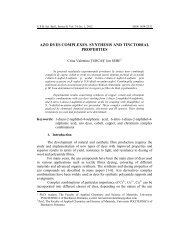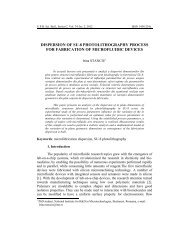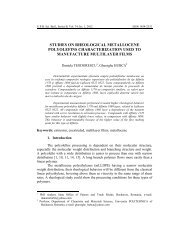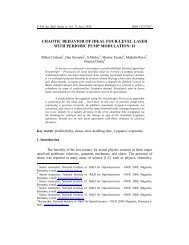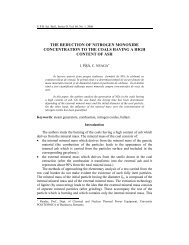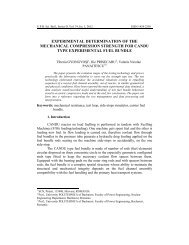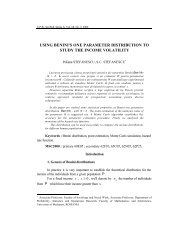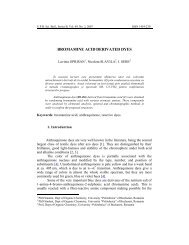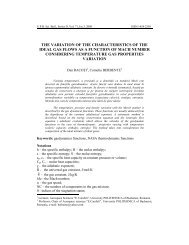U - Scientific Bulletin
U - Scientific Bulletin
U - Scientific Bulletin
You also want an ePaper? Increase the reach of your titles
YUMPU automatically turns print PDFs into web optimized ePapers that Google loves.
146 Christian Russu<br />
1. Introduction<br />
Starting with the last decade of the second millennium a new lubrication<br />
mechanism was developed, based on highly compressible porous layers imbibed<br />
with fluids (HCPL). Studies on this type of mechanism were developed<br />
independently at University POLITEHNICA of Bucharest [1, 2, 3, 4, 5] and at<br />
City University of New York [6, 7].<br />
Named ex-poro-hydrodynamic (XPHD) lubrication [1], this type of<br />
lubrication is strongly dependent on porosity and permeability variation and<br />
considers the forces generated by elastic compression of the solid phase of the<br />
porous layer as negligible.<br />
Known models of XPHD sliders treat cases of lubrication through<br />
dislocation process in one-dimensional manner, thus neglecting the flow in<br />
direction normal to the motion (side flow). The present work intends to analyze a<br />
more realistic model accounting for side flow effects. Comparisons between<br />
numerical results and those predicted by previously published analytical, onedimensional<br />
models, are presented.<br />
2. The model and the numerical approach<br />
The general model considered in the paper can be represented by a slider<br />
moving on a plane surface consisting of a rigid substrate covered by a porous<br />
deformable layer (fig. 1). The slider “dives” into the porous layer and, by its<br />
movement, dislocates the lubricant found inside porous material. Three different<br />
shapes of sliders are considered: stepped, sloped (generating a convergent gap),<br />
and spherical.<br />
W<br />
W<br />
W<br />
L<br />
L<br />
L<br />
a) U<br />
a) U<br />
a) U<br />
b)<br />
h min<br />
h 0<br />
h 0<br />
b)<br />
h min<br />
b)<br />
h min<br />
h 0<br />
c)<br />
Stepped<br />
slider<br />
c)<br />
Sloped<br />
slider<br />
c)<br />
Spherical<br />
slider<br />
Fig. 1. Physical model.<br />
a) slider<br />
b) porous deformable layer<br />
c) rigid substrate



